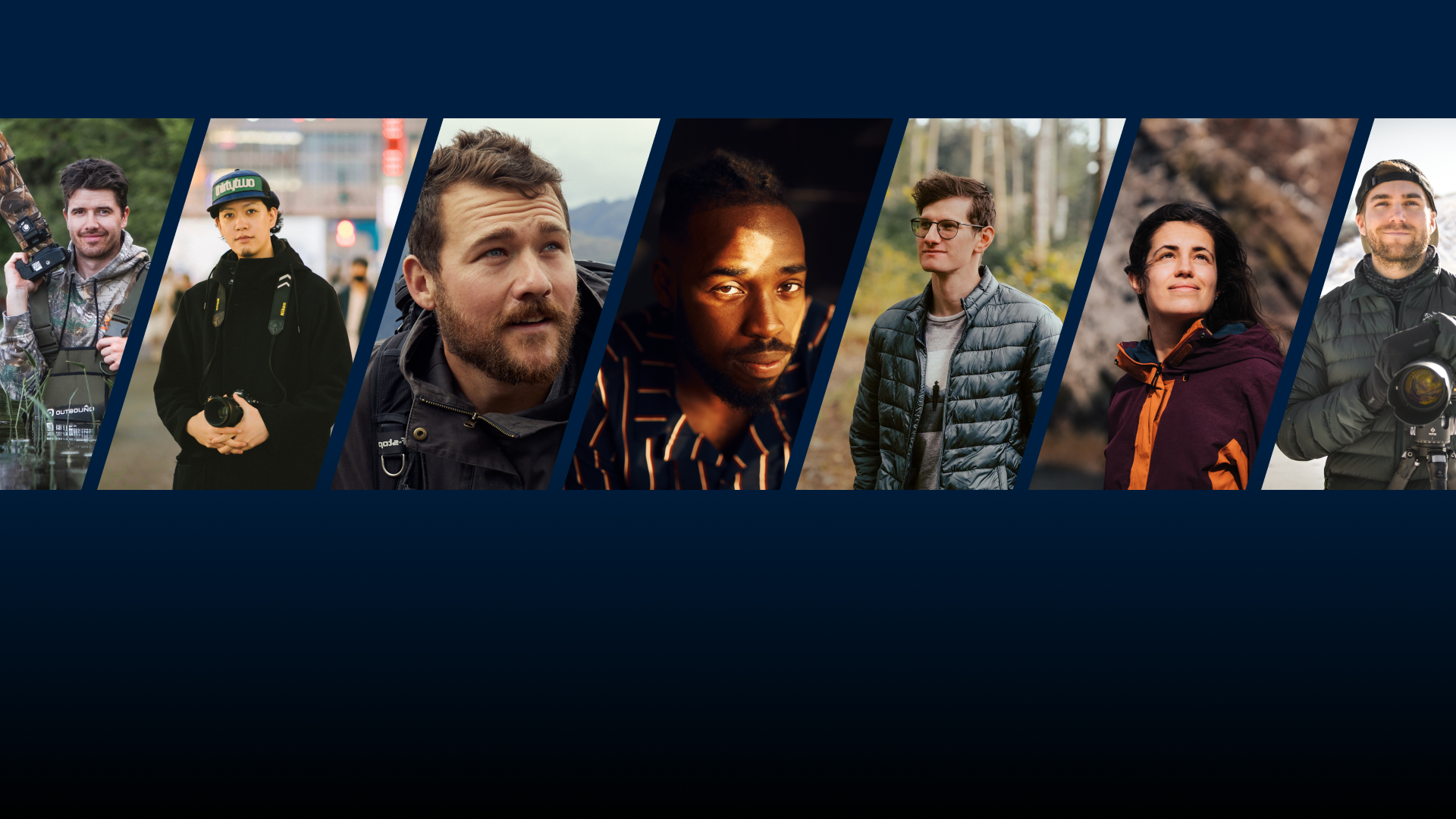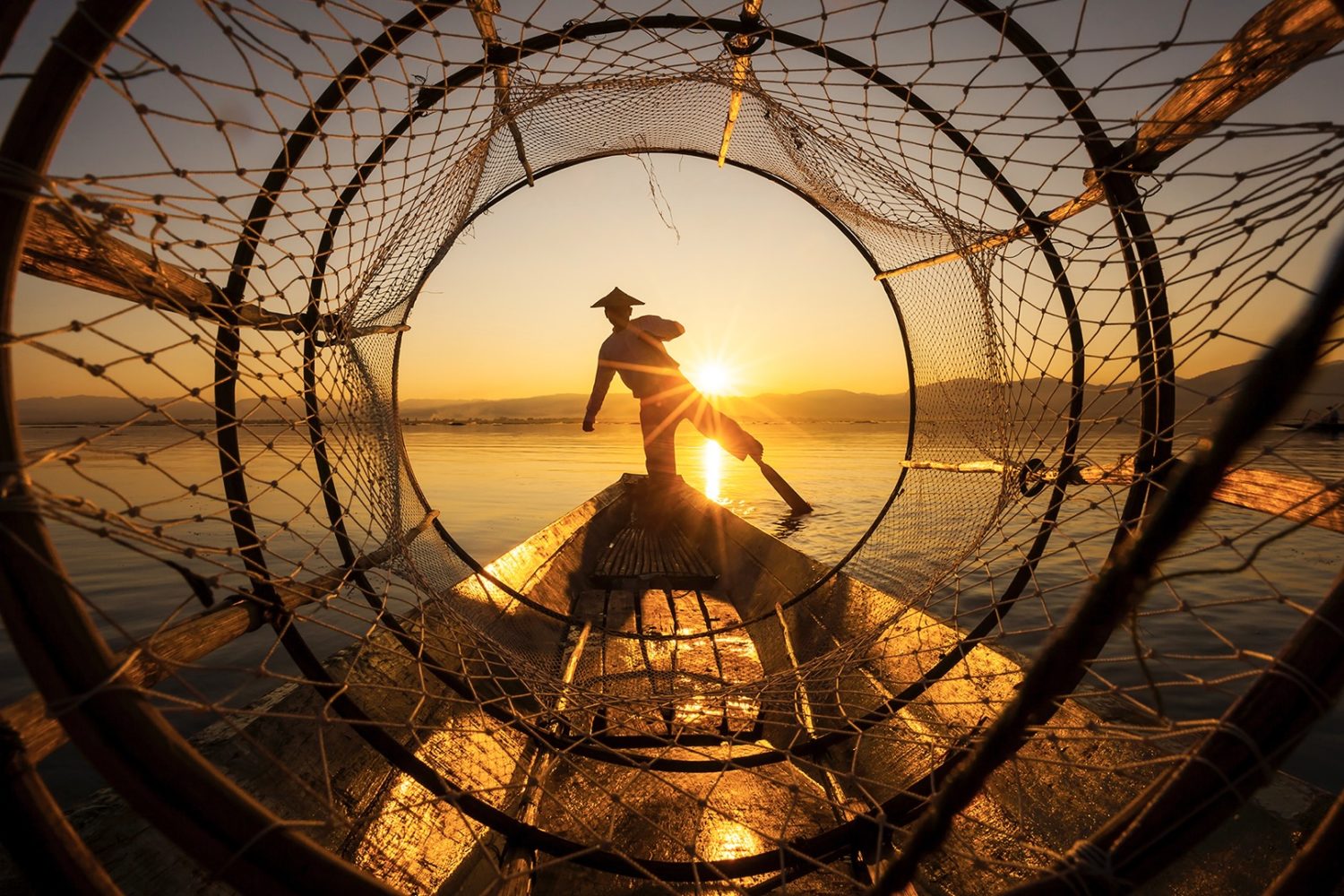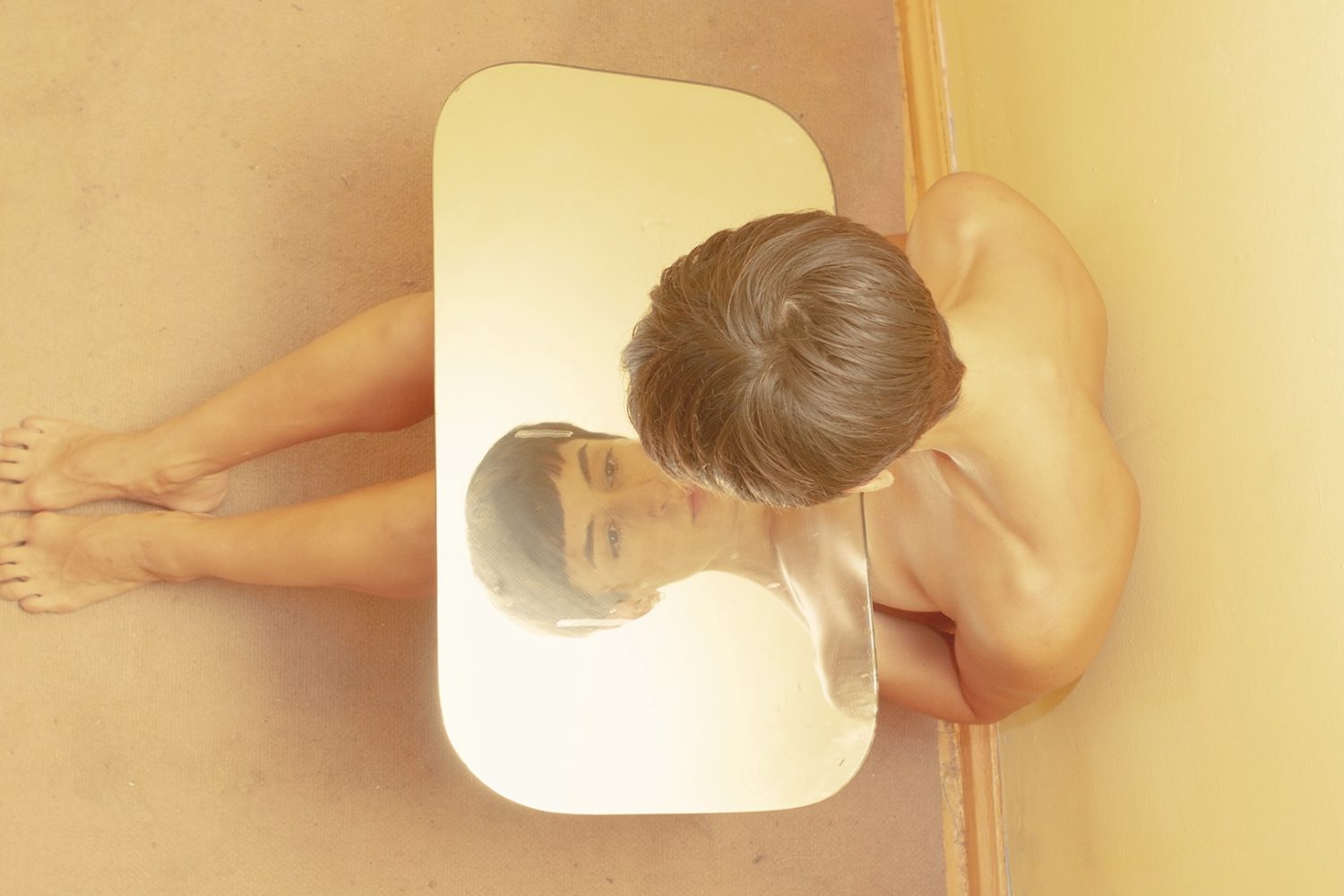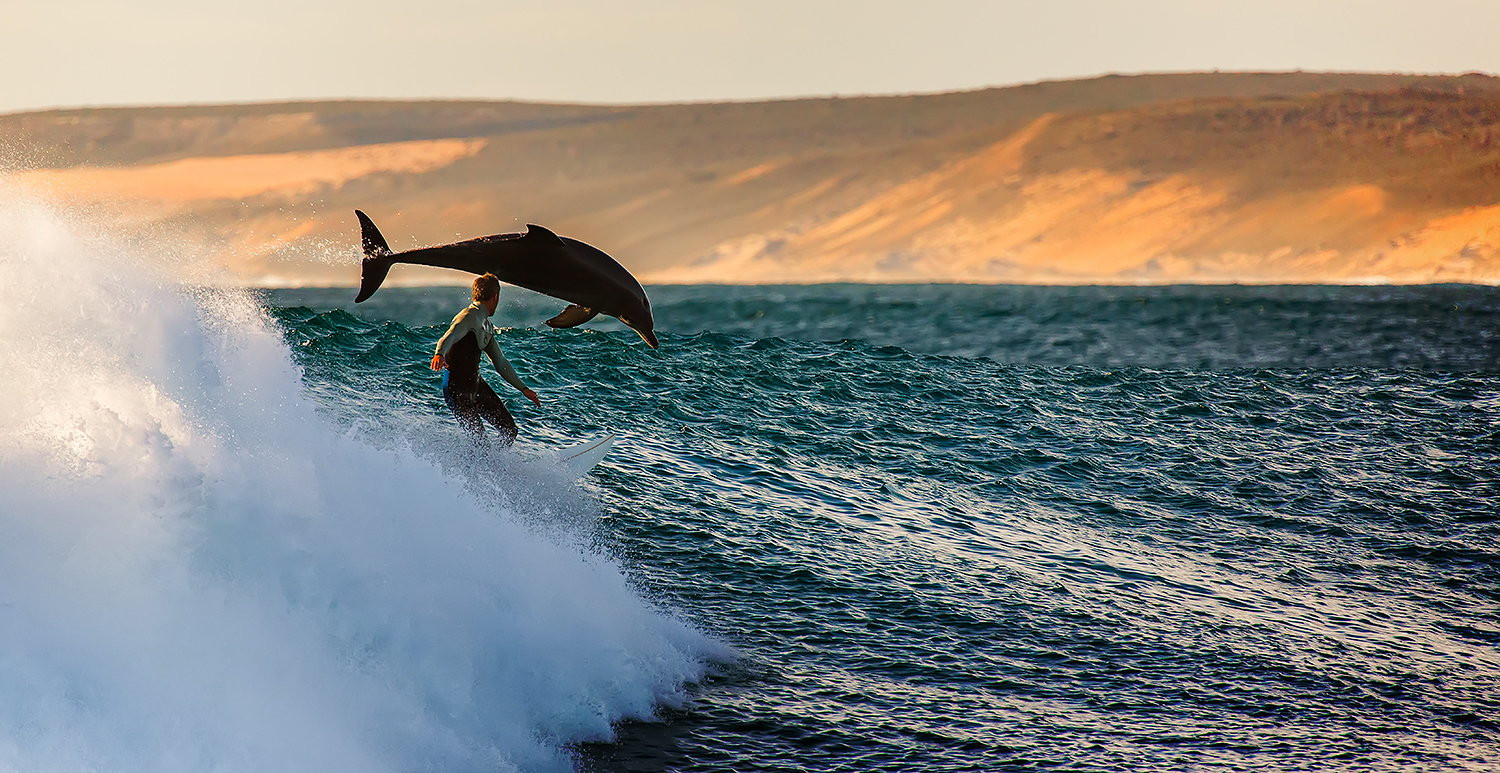Landscape, travel and streetlife photographers have an opportunity you won’t want to miss out on in Around the World in 7 Quests. These seven Quests were launched in honor of World Photography and submissions will be open until September 17.
Do you have photos that were taken in Asia, Oceania, Europe, North America, South America, Africa or Antartica? Then submit now for the chance to win from our round-up of prizes worth $4000 US.
There are 7 amazing prizes to be won from some of the top photography brands; Broncolor, Billingham, Rotolight, Godox, Lo & Sons, Sandmarc and Moment. In addition, there are 7 highly talented photographers who will be judging all the amazing submissions and they gave us some inside tips for how to succeed in this competition.
Tomas Havel is an award-winning landscape photographer based in the Czech Republic with work published worldwide. His images have been published on some of the biggest media channels such as National Geographic, Nasa, or Discovery. He aims to capture a pristine landscape by using his own vision and unique style to show some of the most amazing places on Earth.
How did you get your start in landscape fine art photography?
My work is influenced by the early experience of growing up in a beautiful forest region with the ability to explore the wild and spend time with nature. My childhood coupled with a desire to create made me into the photographer I am today. I discovered my true love for photography during my first trip to Northern Norway.
What do you think makes a successful landscape photo?
It’s very hard to create something unique and new in the infinite world of landscape photography. If you want your photo of a famous viewpoint to stand apart, make sure it is especially creative or that the conditions are exceptional. A successful photo is sometimes created from an ordinary walk in the forest. It depends on the conditions and the special moment.
Do you have any tips for photographers when it comes to capturing European streetlife?
Streetlife photography is all about keeping your eyes open, being fully aware of the moment, and seeing everything happening in front of you. It’s often about good luck, but a lot of it is also about speed and how well you’ve mastered your photography. Maybe something unreal is happening right in front of you, something you’ve wanted to come across.
Your go-to lens for landscape/travel photography?
For me, the best lens for landscape photography is the Sony FE 16-35mm f/2.8 GM.
Any tips for photographers submitting to the Europe Quest?
Be creative and original. Yes, it’s true but also a very general and meaningless tip. I love to see work that demonstrates innovation but also perfect technical quality. The final atmosphere of the photograph, composition and color balance is important. However, if you feel you have a photo that doesn’t follow the rules but is still perfect and original, show it to the world!
William Patino grew up in the coastal town of Wollongong, NSW Australia and has been a full-time landscape photographer since 2014. Photography came into his life around 2011 and it has helped him see the world differently, giving him a newfound appreciation for nature and the many intricacies that he once overlooked and perhaps took for granted. His work is based around a deep reverence and awe of nature and the creator, and it’s this that I try and express through my images.
How did you get your start in landscape fine art photography?
I’ve always had an interest in visual arts and growing up, I enjoyed making skateboard videos of my friends. I eventually tried my hand at still photography and at the same time, I also came across some landscape images online. This inspired me to get outdoors with my camera and I instantly fell in love. Photography changed the way I view the world and helped immensely with my mental health. I used the camera as an outlet and committed every spare moment I had to learning and exploring. I truly love it and the way it has changed my life.
Do you have any tips for photographers working with landscape/wildlife photography to ensure they practice ethical photography?
Slowing down and respecting the land and subject matter is important to me. As photographers, we ‘take’ a lot. We take photographs, experiences and memories but we need to give back as well. We can raise awareness with our images, be conscious of not damaging the environment we are in, and support the local communities that we visit in our travels.
Your go-to DSLR lens for landscape/travel photography?
I’ve used mirrorless cameras for 10 years now and enjoy using a variety of different focal lengths to capture the landscape. It’s really hard to narrow it down to just one lens! Realistically, I probably most enjoy using the ultra wide 12-24mm Sony lens I have, as it allows me to create compositions with a lot of depth and layering.
Your tried and true camera accessory for landscape/travel photography?
I’m not your traditional landscape photographer. I don’t use a tripod or any filters. Just a camera and 3 lenses. The main accessory that I’m lost without is my microfiber towel, which I use to protect and clean my gear on rainy days or in damp environments, like rainforests, seascapes and near waterfalls. It’s just so handy to have.
What will you be looking for when it comes to judging the Oceania Quest?
When it comes to creating a photograph, I envision something that I’ve come to call ‘the 4 pillars’, which are what should equally come together and support an image. These are location, composition, light and processing. I’ll be considering all four of these when judging.
Seth Macey is a wildlife and landscape photographer based in Ontario, Canada. Seth spends the vast majority of his time behind the lens immersed in nature, learning the land, researching, and tracking animal subjects. He is also the co-host of the Photographer Mindset Podcast where photographers in leadership roles are invited to come on the show and share ways in which listeners can build their mental fortitude, develop out of the box thinking strategies, and work smarter towards their own versions of success in photography.
How did you get your start in landscape fine art photography?
Around the same time I was showing an interest in photography, I felt my life needed some adventure, unique experiences, and excitement. My camera quickly became a catalyst or a reason for me to travel abroad and commit to adventures. Photographing landscapes became a byproduct of me living a more authentic life. I felt the need to document and share these photographs as a way of expressing my own journey into an unconventional life that was true to who I was.
What’s your go to DSLR lens for landscape photography?
I’m a loyal Canon shooter. For the longest time I shot with a Canon 6D and a 24-70mm lens for landscape photography. I pushed the camera so far until it reached its capabilities of what I wanted it to do. That’s when I knew it was time for an upgrade. I upgraded to a Canon mirrorless R with an electronic viewfinder and 33% more megapixels. Those extra megapixels help especially for larger prints.
Your tried and true camera accessory for landscape/travel photography?
Get a lens polarizer. Ideally, we want to be shooting during the golden hour of sunset and sunrise so we get nice soft light on our landscapes and wildlife subjects, however, sometimes you just want to be able to shoot whenever you feel like it. A polarizer is a great tool that will allow you to take better shots during midday light and reduce some of the harshness we get from the midday sun. I never used to shoot with one but now I like the freedom, especially when traveling abroad, of being able to confidently shoot at any time of day.
Do you have any tips for photographers working with landscape/wildlife photography to ensure they practice ethical photography?
It’s easy to make unethical mistakes in the field especially when you’re entering a new genre of photography. Sometimes we can get so caught up in doing whatever it takes to get the shot that we often overlook the often negative impact we can have on wildlife and their environment during the shooting process. There are some great rules of thumb to follow;
-If your shot requires the destruction of sensitive terrain, stay put. Position yourself differently so that wildlife comes to you or let that shot go. There will be another.
-Any action you perform that causes wildlife to become distressed or act out of their wild character is likely unethical. Some examples would be, yelling at animals so they move, getting far too close for shots, baiting, etc.
-If you ever get the feeling what you’re doing isn’t ethical, trust that feeling because you’re likely right.
-An animal’s well-being always supersedes your photograph.
Do you have any tips for the 500px community when it comes to submitting to the North America Quest?
Submit photos that have an interesting element to them. Having judged a couple of competitions in the past, I find the photographs that have one peculiar or unique characteristic to them stand out from the crowd. There are lots of talented people submitting tons of great work, which is why an image with something unordinary about it usually catches attention. This could be an object in the foreground, the way the clouds are formed, motion captured in an image, etc. Look for that thing that will make the photograph different from everyone else.
SUBMIT TO THE NORTH AMERICA QUEST
Matt Meisenheimer is a photographer based in Wisconsin. His artistry revolves around exploring the wilderness and constantly seeking out new adventures. He strives to capture those brief moments of dramatic light and weather, which make our grand landscapes so special.
How did you get your start in landscape fine art photography?
Like many others in the profession and hobby, I love the outdoors and exploring new places. I spent time working in US National Parks out of college and that gave me the opportunity to explore a lot of the Pacific Northwest. I bought a camera to document my trips and hikes there, and that eventually turned into much more.
After that stint, I purchased my first full-frame camera and dove head-first into landscape photography. It quickly became my passion and driving force in life. I attended a Marc Adamus workshop when I first became ‘serious’ about photography, and it totally changed my perspective on being a creative and capturing landscape images. I felt like one week with Marc made up for about 5 years of photography time.
From that point, I started taking my own personal trips, each one geared towards creating images. I built up a portfolio and eventually started leading workshops with Backcountry Journeys.
Photography is the best thing to ever happen to me, and it is undoubtedly my passion in life.
What do you think makes a successful landscape photo?
The most common answer is composition, right? I couldn’t agree more. Composition is everything, it relates to how you arrange the available elements of a landscape into a visually pleasing and enticing image.
But, what I really think separates the very best photographers out there, is their ability to take a complex scene and simplify it. That means taking multiple elements (i.e. flowers, streams, mountains) and composing them in a way that provides a clear flow for the viewer – a simple image.
Sometimes the most important decision you make as a photographer is what to NOT include in your image, versus what to include. In the field, I’m always thinking ‘simple’!
Your go-to DSLR lens for landscape/travel photography?
I love Nikon’s mirrorless offering. I am currently using a Nikon Z7 with a 14-30mm f/4 and a 24-200mm f/4-6.3. The 14-30mm f/4 is an innovation from Nikon. Excellent image quality, 14mm on the wide end, 82mm filter thread AND it’s so small and portable. Same goes for the 24-200mm f/4-6.3. Excellent quality for what it is, and incredible coverage from 24-200. I highly recommend this setup to all landscape photographers.
What’s your favorite camera accessory in your photography kit? Why?
My favorite camera accessory is a bit unusual but extremely useful. It’s neoprene socks or waders. Sometimes, getting the best shot or vantage point involves getting wet. Whether it’s sitting in an alpine stream or getting soaked by ocean waves, I find that landscape photography involves quite a bit of water. Neoprene socks are lightweight and a great solution for cold water shooting situations where you may get wet – like waterfalls, streams, rivers, seascapes, etc. I always carry a pair in my camera bag for that type of shooting. They can help you stay warm and comfortable when you’re sitting in the water trying to align a composition.
Any tips for photographers submitting to the South America Quest?
South America has so many fantastic locations, too many to list. Some of these locations have become extremely popular over the last decade – Patagonia, the Andes of Peru, the Amazon, and more. We’ve all seen a lot of shots from some of those iconic South American locations, and rightfully so.
I think the images that stand out are the unique ones. Whether it’s unique conditions, unique compositions, or unique places. That’s what I’ll be looking for as a judge, something unique that combines technical, compositional, and post-processing prowess at a high caliber.
SUBMIT TO THE SOUTH AMERICA QUEST
Sara Zanini is a travel and aerial photographer. She works with a Mavic 3 drone which gives her the possibility of infinite points of view that allow her to recreate, in the moment of the shot, the emotions that she felt in front of the wonders of the world and nature.
How did you get your start in landscape fine art photography?
I have always been a traveler thanks to my parents and I believe that starting to photograph the world around you when you travel is just a natural evolution of traveling.
What do you think makes a successful landscape photo?
Obviously the composition, the light, but most of all the ability to convey the same emotion that you experience in the moment of the shot
You also work a lot with drones, what drew you to them and where do you suggest people start with drone photography?
Surely seaside or desert locations are the best place; no obstacles and ample opportunity to test oneself.
Your go-to DSLR lens for landscape/travel photography?
Landscape 24-70mm f2.8 Travel 70-200mm f2.8
Your tried and true camera accessory for landscape/travel photography?
My Peak design tripod in carbon fiber: light weight and small ?
Any tips for photographers submitting to the Antarctica Quest?
Try to excite and intrigue the viewer by bringing the emotion that this remote landscape conveys into your shot.
SUBMIT TO THE ANTARCTICA QUEST
Segun-Kabir Sani is a visual storyteller and a firm believer in passion and creativity as core ingredients to his craft. Either hunting for inspiration or waiting patiently for food at his favorite restaurants, he always has a camera nearby. His images mainly use natural light and are structured around real authentic moments rather than posed photos. He continually aims for the real thing, hunting for those strong emotions that result in beautiful, honest, and raw images.
How did you get your start in photography and why do you love it?
I started photography when I got into the university. At the time most of my friends were into one thing or the other, some music and others drawing. I started as a music producer, struggled a bit, till I found photography.
I love it so much because I’m able to bring ideas in my head and make them real through my photographs
Do you have any advice for photographers working in Africa on how to respect the culture?
I advise any photographer to always keep shooting, this is the best way to sharpen your skills. Be polite and be very respectful of your environment.
What do you think makes an impactful image?
Impactful images are made through the manipulation of light and shadows.
What camera accessory do you consider a must-have?
I consider having an ND filter a must have camera accessory. It will help u get the right exposure anywhere and anytime.
Any tips for photographers submitting to the Africa Quest?
Pay attention to what is in front of your camera at all times, shoot what it feels like not what it looks like.
Kosuke Kurata is a talented Nikon and Drone photographer based in Japan. His photography is diverse, artfully capturing busy urban spaces as well as the more serene landscapes in remote parts of the world.
How did you get your start in landscape fine art photography?
I had the privilege of traveling around the world and seeing different landscapes from a young age, I think it all began there.
And when I got my first camera, I was driven by the want to share the sights and experiences I had with my friends and family, and that passion gradually grew from there.
Any suggested locations in Asia that you’ve captured in the past and think provide a great canvas for photographers?
I’ve been to various places in Asia and loved the sights I’ve seen, but Mt. Fuji will always have a special place in my heart.
It’s a subject that’s been captured many times before, because of the many faces it has. The time, the season, the weather. It all matters, especially in Japan where we have all four seasons (and of course, the sakura in spring, and Japanese Maple in fall).
Your go-to DSLR lens for landscape/travel photography?
I usually carry 3 lenses to minimize the amount of weight in my bag!
- 15mm f2.8 – when I visit distant cities, I love shooting the city’s buildings as well as the nature and this lens help me capture it extremely well!
- 24-70mm f2.8 – the best versatile lens when I just want one lens in my bag.
- 70-200mm f2.8 – long lenses are always a must when you’re shooting landscapes and this one is my favorite due to its versatility and the 2.8 that’s constant throughout its focal length.
A special addition is a drone of course. Mavic air 2 is my favorite due to the weight and ease of use!
Your tried and true camera accessory for landscape/travel photography?
A polarizer is the best for sure! It provides vivid colors and contrast by erasing the unwanted haze and reflections. For example, the polarizer removes the reflections on the surface of the water to capture the ocean more clearly as well as allowed the sky to be a deep and vivid blue.
What will you be looking for when it comes to judging the Asia Quest?
Use of light, style of editing, originality, a story that I can feel from it (especially appreciation, and respect for the culture it’s from) and the impact on the viewer.













